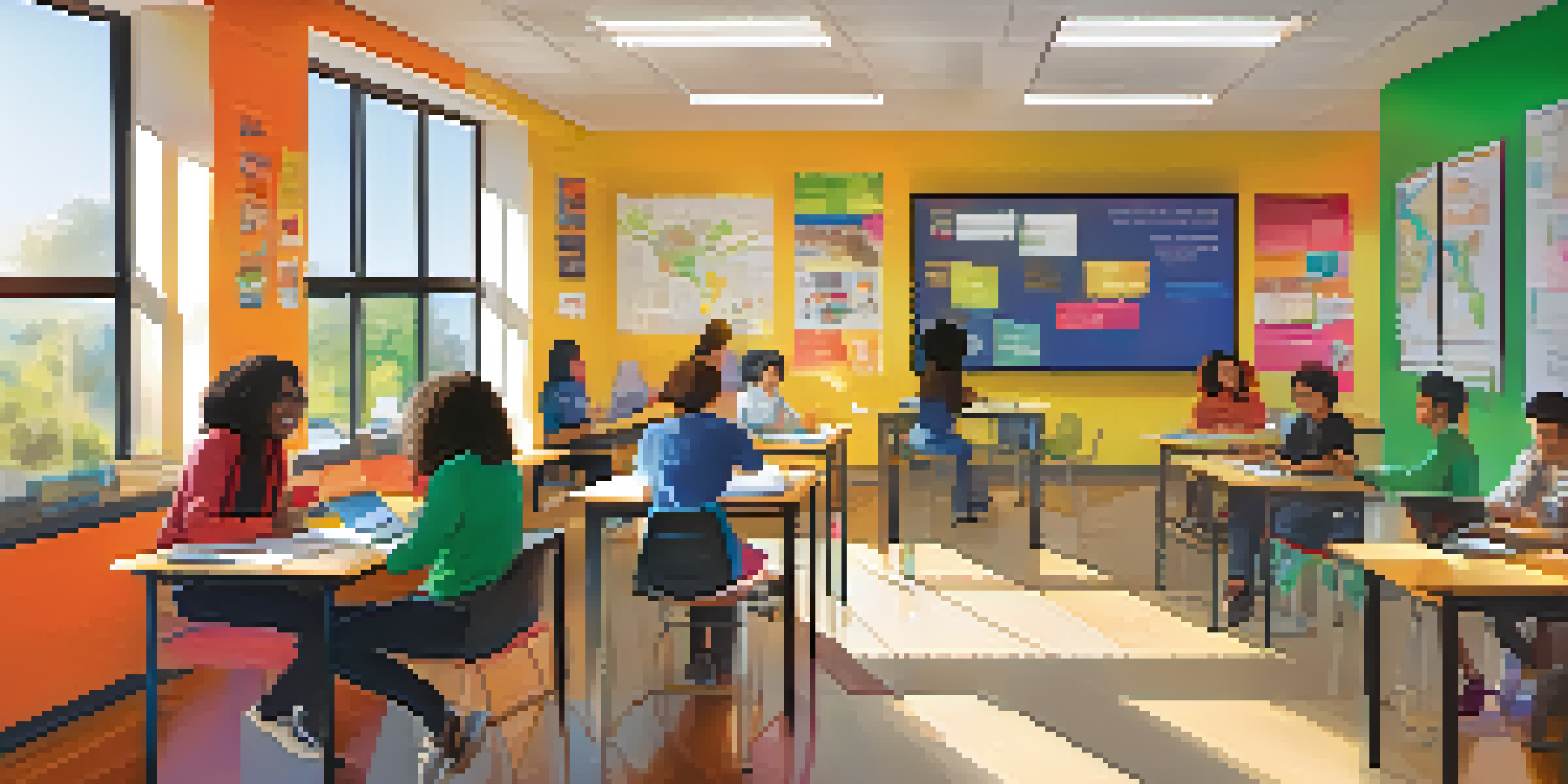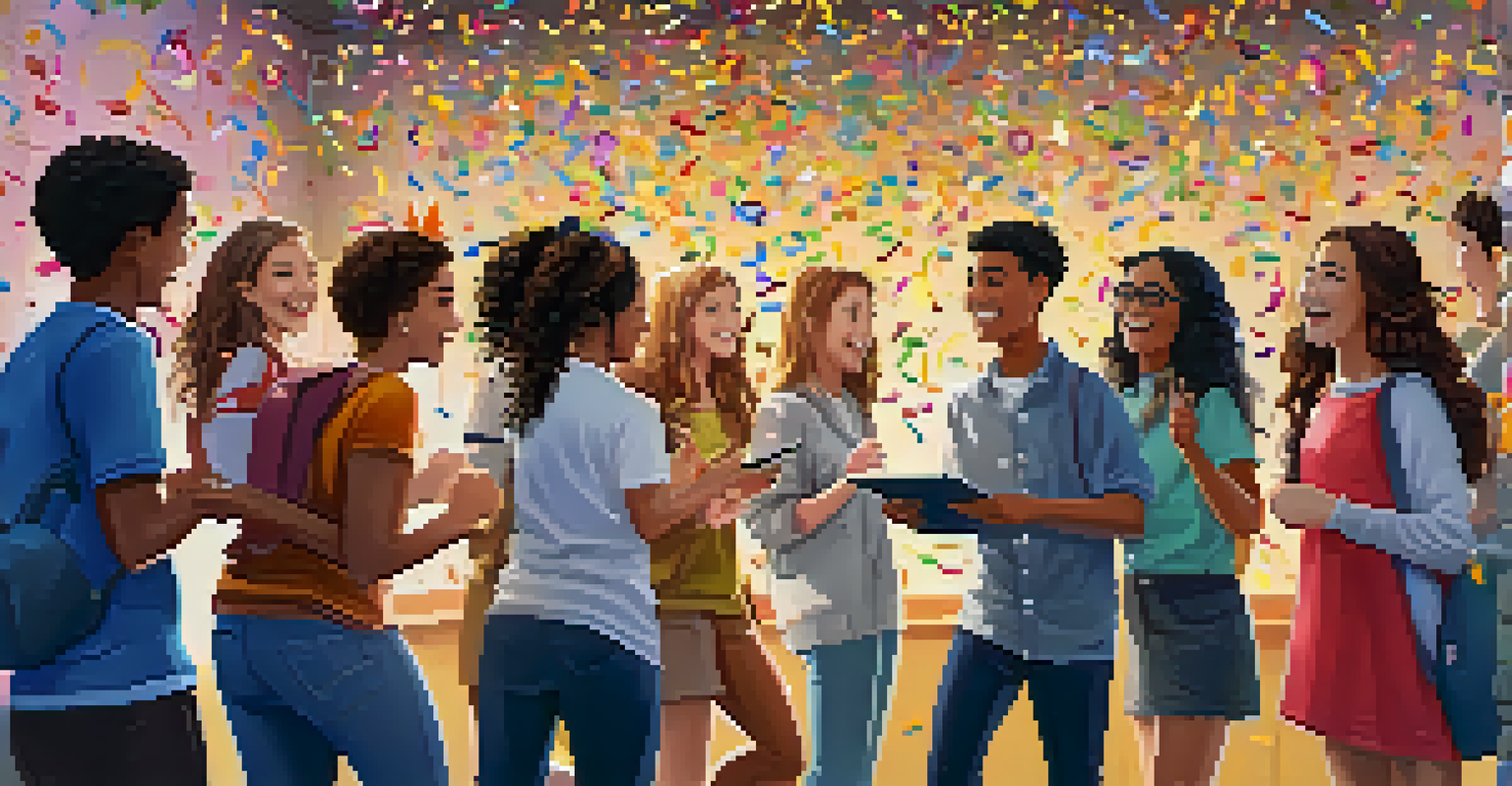Building a Positive Learning Culture in Blended Settings

Understanding Blended Learning Environments
Blended learning combines traditional face-to-face classroom methods with online learning. This approach allows for a diverse range of learning experiences, catering to different student needs and preferences. By integrating both formats, educators can create a dynamic and flexible learning environment that encourages engagement and collaboration.
The greatest danger in times of turbulence is not the turbulence; it is to act with yesterday's logic.
Imagine a classroom where students can discuss ideas in person while also accessing a wealth of resources online. This flexibility not only enhances the learning experience but also allows for personalized learning paths. In this setting, students are empowered to take charge of their education, which is a crucial component of a positive learning culture.
To build a successful blended learning environment, educators must understand the unique challenges and opportunities it presents. By fostering an inclusive atmosphere that values both in-person and online interactions, schools can pave the way for a more enriching educational experience.
The Role of Educators in Shaping Culture
Educators are key players in establishing a positive learning culture. Their attitudes, teaching styles, and interactions with students set the tone for the entire learning environment. When teachers show enthusiasm and support for both in-person and online learning, students are more likely to engage and thrive.

It's essential for educators to model positive behaviors and create an atmosphere of trust and respect. For instance, a teacher who encourages questions and celebrates mistakes fosters a safe space where students feel comfortable taking risks. This kind of environment is especially important in blended settings, where students may feel disconnected at times.
Blended Learning Enhances Engagement
Integrating online and in-person learning fosters a dynamic environment that caters to diverse student needs.
Moreover, continuous professional development can help educators adapt their teaching methods to better serve their students in blended environments. By staying informed about the latest educational technologies and methodologies, teachers can enhance their effectiveness and contribute to a positive culture.
Encouraging Student Engagement and Ownership
In a blended learning setting, promoting student engagement is vital for developing a positive culture. When students feel involved in their learning process, they are more likely to take ownership of their education. This sense of ownership can be cultivated through project-based learning, where students collaborate and apply their knowledge to real-world situations.
Education is not the filling of a pail, but the lighting of a fire.
For example, consider a group project where students research a local issue and present their findings online. This not only encourages teamwork but also allows students to connect with their community. When learners see the relevance of their studies, they become more invested in their learning journey.
Additionally, incorporating student feedback into the learning process can significantly enhance engagement. When students know their opinions are valued, they are more likely to participate actively, leading to a richer learning experience for everyone involved.
Creating a Supportive Online Community
An essential aspect of blended learning is the online community that supports students outside the classroom. This virtual space can facilitate discussions, collaboration, and peer support, which are crucial for building a positive learning culture. When students feel connected, they are more likely to engage with the material and each other.
To foster this sense of community, educators can utilize discussion forums, social media groups, or collaborative platforms. These tools allow students to share ideas, ask questions, and provide feedback, creating a vibrant online ecosystem. Just like a classroom buzzes with conversations, a lively online community can energize students’ learning experiences.
Educators Shape Positive Culture
Teachers play a crucial role in creating a supportive atmosphere that encourages student participation and risk-taking.
Moreover, regular check-ins and virtual team-building activities can help strengthen relationships among students. By prioritizing community-building in online spaces, educators can ensure that students feel supported and valued in their blended learning environment.
Fostering Collaboration Among Students
Collaboration is a cornerstone of a positive learning culture, especially in blended settings. When students work together on projects, they develop vital communication and teamwork skills. These collaborative experiences not only enhance learning but also help build relationships among peers, contributing to a supportive culture.
For instance, consider using group assignments where students must collaborate both in-person and online. This approach encourages them to utilize various tools and platforms, enhancing their ability to work as a team. The shared responsibility also fosters a sense of belonging and accountability, making learning more enjoyable.
Additionally, promoting peer mentorship can further strengthen collaboration. When students support each other, they create an environment where everyone feels empowered to succeed, ultimately enriching the overall learning experience.
Leveraging Technology for Enhanced Learning
Technology plays a significant role in creating a positive learning culture in blended settings. By leveraging various tools and platforms, educators can enhance engagement and streamline communication. This not only makes learning more accessible but also caters to diverse learning preferences.
For example, using learning management systems can help organize resources, track progress, and facilitate discussions. These platforms provide students with a centralized hub where they can access materials and collaborate with peers. When technology is integrated effectively, it becomes a powerful ally in fostering a positive learning environment.
Collaboration Boosts Learning Success
Working together on projects helps students develop essential skills and fosters a sense of belonging in blended settings.
Moreover, educators should encourage students to utilize technology for self-directed learning. By teaching them how to explore online resources and engage with interactive content, students can take charge of their education and deepen their understanding of the subject matter.
Regular Assessment and Feedback for Growth
Assessment and feedback are crucial components of a positive learning culture. In blended settings, regular evaluations help identify areas for improvement and highlight successes. By providing timely and constructive feedback, educators can guide students in their learning journey and foster a culture of continuous growth.
Think of assessments not just as a means of grading but as opportunities for reflection and learning. For instance, formative assessments—like quizzes or peer reviews—allow students to gauge their understanding and adjust their strategies. This approach not only supports academic success but also encourages a mindset of lifelong learning.

Furthermore, involving students in the assessment process can empower them to take ownership of their progress. By encouraging self-assessment and goal-setting, educators can cultivate a culture where students are motivated to strive for excellence and embrace challenges.
Celebrating Achievements and Milestones
Celebrating achievements, both big and small, is essential for nurturing a positive learning culture. Acknowledging students' successes fosters motivation and reinforces their hard work. In blended learning environments, these celebrations can take many forms, from virtual shout-outs to in-person award ceremonies.
For example, consider creating a digital wall of fame where students can showcase their projects and accomplishments. This not only highlights their efforts but also inspires others to strive for excellence. When students see their peers being recognized, it cultivates a sense of community and encourages a collective pursuit of success.
Additionally, celebrating milestones in the learning journey can create a supportive atmosphere. Whether it's mastering a new concept or completing a challenging project, these moments of recognition can significantly boost students' confidence and contribute to a thriving learning culture.